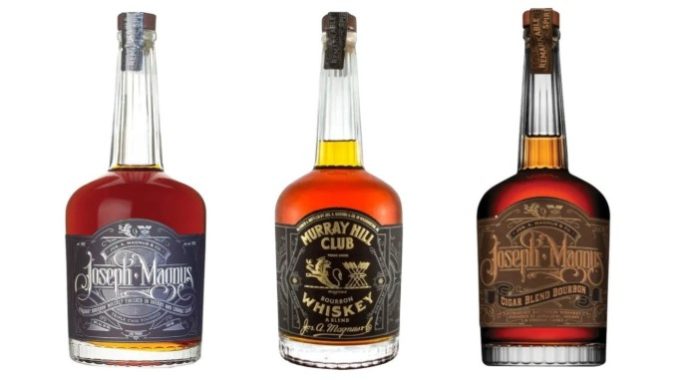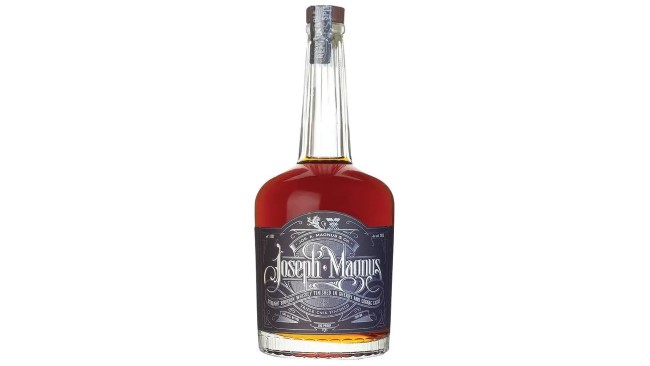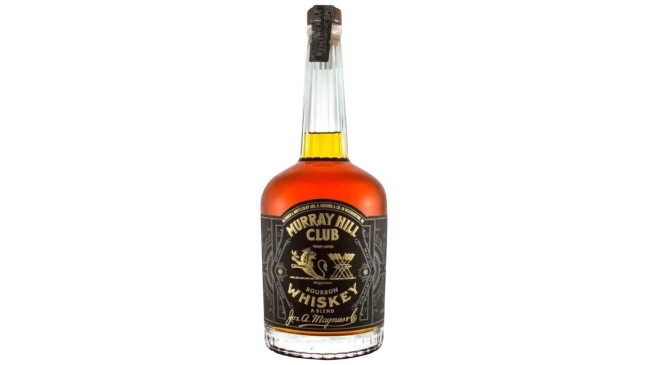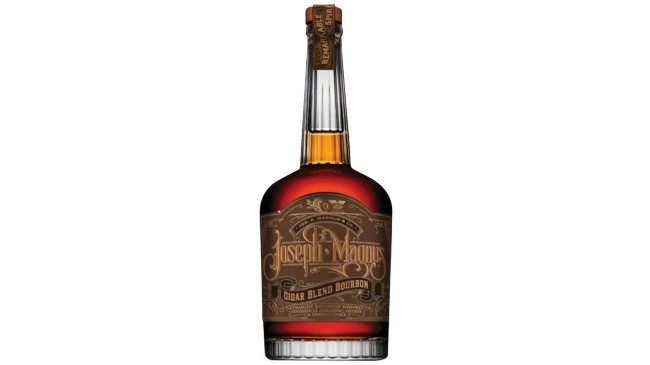Tasting: 3 Core Whiskeys from Joseph Magnus (Bourbon, Murray Hill Club, Cigar Blend)
Photos via Joseph Magnus
If you’re looking for a poster child for the success of sourced, finished whiskey brands in the modern American whiskey market, Joseph A. Magnus would seem to be a prime example. This is a non-distiller producer, one that whiskey fans have likely become familiar with seeing on store shelves, or photographed in online bourbon collecting groups. There was an earlier era where spirits from this sort of company would likely have been expected to be making a play for a value demographic, but any stigma of being a sourced or non-distiller producer brand has long since melted away–Joseph Magnus is free to pursue an ultra-premium price point, and they’ve been one of the companies that has helped to normalize that idea in the last decade, primarily sticking with three flagship products: Joseph Magnus Bourbon, Murray Hill Club, and Joseph Magnus Cigar Blend Bourbon.
And yet … for all its popularity, this is one of those brands that always sort of slipped through the cracks for me. I’ve had the occasional taste of their products over the years, but never sat down to really dissect them, or conduct a full tasting of the lineup. Today is an opportunity to correct that oversight and gain some more context on the brand.
That brand has existed in its current form since being recreated in 2015 by the great grandson of the original Joseph A. Magnus, a liquor wholesaler known for the quality of his signature Murray Hill Club blend, first released in the 1890s. The modern Joseph Magnus was reestablished in Washington D.C. before moving to Holland, Michigan in 2020, where its blending is based out of the Coppercraft Distillery. Unsurprisingly, they share ownership via Windquest Group. From this position, the company focuses on Joseph Magnus as a solely sourced series of blends known for their barrel-finished bourbons.
So with that said, let’s get to tasting these three expressions.
Joseph Magnus Bourbon
MSRP: $100

Even though it has influenced the state of the whiskey shelf as it exists today, the company’s flagship bourbon is still something of an oddity almost a decade into the company’s existence. A non-age-stated bourbon with a $100 price tag is already asking a lot for many consumers, but you then need to factor in secondary finishes of straight bourbon whiskey–sourced from Indiana and Kentucky–with three different styles of cask, including oloroso sherry, PX sherry and cognac. We are subsequently left with something pretty unique for the market even now. It weighs in at 50% ABV (100 proof).
On the nose, this one displays a lot of character gleaned from those finishing barrels, in the form of dark and especially dried fruit, along with considerable vanilla extract. It’s actually somewhat hot on the nose, with a vinous ethanol intensity that really evokes the fortified wines involved–it may also be that the relatively younger bourbon whiskey here is a little bit overwhelmed by the influence of the barrels. On the palate, this displays waves of plum or fig fruitiness, with deep maltiness and dark caramel with a slightly bitter edge to it. I’m getting smoked clove and substantial fortified wine/vinous character, with a slowly advancing nuttiness suggesting almond butter. One thing it isn’t is particularly sweet, displaying more of the oxidized nuance and nuttiness of the oloroso and PX sherry casks. The overall impression is like cooked fruit syrup without additional sweetening, but with a certain boozy edge. To me, this is an interesting profile but one where it feels like the finishing barrels have to some degree overtaken the base spirit.
Murray Hill Club
MSRP: $119

The company is oddly inconsistent in its transparency when it comes to packaging–whereas the two “Joseph Magnus” brands cite their distillate as having been sourced from Indiana and Kentucky, the historically inspired Murray Hill Club offers no clue at all to where it was distilled. Regardless, this one is definitely an interesting concept, blending very mature bourbon (18 and 11 years old) with 9-year-old light whiskey. Now, the use of light whiskey–which can be distilled to a higher initial proof and aged in re-used barrels–is a tool that can be used to potentially give this product a lighter body and more approachable character, though the fact that even the light whiskey component is well aged likely means that even the serious bourbon geek would not particularly object to its presence. Ultimately, the goal appears to be emulating the historical Murray Hill Club as closely as possible. The result weighs in at 51.5% ABV (103 proof).
On the nose, Murray Hill Club displays boozy vanilla milkshake and dark fruity tones, with a buttery pie crust element evoking fruit tart and pastry. Warm caramel and dark fruit preserves show up prominently on the palate, like boysenberry jam with plenty of cinnamon and warm spicy oak to complement it. The vanilla is quite pronounced here, with lots of frosting/buttercream character, and a certain acidity to the fruitiness that puts me in mind of blackberry shrub. This tartness plays well, and I’m rather liking the interplay between the bright fruit and wood-derived spice notes.
Joseph Magnus Cigar Blend Bourbon
MSRP: $200

Of all the Joseph Magnus products, the Cigar Blend has undoubtedly generated the most headlines and ultimately has been the most influential. It was a stroke of marketing genius from the beginning, starting with the name–“cigar blend” has such a luxuriant sound to it, and the company manages to use it to both suggest “this has tobacco notes” and “this pairs well with a cigar.” That was a space that had not necessarily been explored particularly well when Joseph Magnus Cigar Blend first started finding its way into the market, but it’s certainly exploded in popularity in recent years. You may well have noticed these effects yourself, as numerous companies have effectively aped this marketing with their own products labeled as “cigar blend” or “cigar cut,” etc. One thing is for certain: These products always denote a high-end release, and that is very attractive to the companies making them.
As for what is actually in this bottle, these are typically blends of well-aged Indiana and Kentucky high-rye bourbons, which are finished in Armagnac casks and bottled at 50.35% ABV (100.7 proof). There is some batch variation here, and fans of the Cigar Blend will often swear by one batch number or another, though I can’t really say how much of this is merely consumer suggestibility. The company maintains a website with batch notes for Cigar Blend, but it seems to be a bit behind–my sample is labeled from Batch 235, and the last entries on the site are Batches #201-206. They are all “artfully blended to enjoy with a fine cigar.”
On the nose, I’d like to say something other than “tobacco” as a lead off note, because it feels like that’s just being planted in my head by the name, but it really is accurate at the same time–there’s a savory herbal quality to this that does suggest dried tobacco leaf. It’s joined by pepper and richer cardamom spice, along with raisin and cigar wrapper, and vanilla extract. On the palate this takes on a slight dark maltiness to it and becomes increasingly complex, rich in toasted spice notes and dried fruit, along with vanilla pudding. This has a depth to it, swinging from fig jam to cardamom buns and particularly buttery impressions, with flourishes of leather and tobacco. It has moderate tannin as well, but in a very structured and pleasant way, bringing coherence and elegance to the end of each sip. All in all, you can definitely feel the care and calculation that goes into this brand.
Jim Vorel is a Paste staff writer and resident liquor geek. You can follow him on Twitter for more drink writing.







































